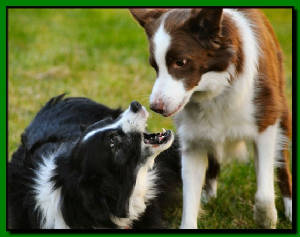|
|
Animal
Friendly - Customer Smart has 113 pages that explain important concepts and then offers examples, hints,
familiar case studies/scenarios and includes many different types of exercises. The following is an example
of 2 pages found in Chapter 5, "The Martial Art of Customer Service....Dealing with the Good, the Bad and the
Super Hostile." The chapter begins by helping readers list good/desirable customer behaviors followed by the
most challenging things customers have said or done. Next is an overview of how staff and Volunteers easily
become "reactive" and meet an angry customer with more anger or sarcasm or simply say nothing and internalize
negative feelings, creating unhealthy situations for themselves and possibly the next customer. The concept of
being proactive and handling a situation without becoming defensive, offensive or thrown off base by the other person's
anger is explained. Two true case studies are shared (an account a woman who was extremely offensive to a clerk
and the other about a customer who got agitated waiting in line), and conclusions are discussed so that readers can
see familiar examples and ways to handle them. The summary and a brief sample of a longer exercise are shared below. In the
workbook itself, the longer exercise is followed by conclusions and useful tips.
Reactive (harmful) vs. Proactive
(helpful) Behaviors When we become reactive players in negative exchanges, we...
When we are wisely proactive and use verbal aikido, we...
Winning! Animal shelter staff and Volunteers who practice verbal aikido moves readjust their definition of what winning means in an interaction with a difficult customer. Here is what they say: WINNING in an interaction is NOT: 1. Getting bigger and uglier than the customer, 2. Making the customer admit they are wrong, 3. Punishing them by becoming inflexible, or 4. Forcing the customer to listen. WINNING in an interaction IS: 1. Getting a job done in the most professional way possible, 2. Learning to deal objectively with difficult people. 3. Letting go of punishing people who are not nice, 4. Helping people hear us by remaining calm and logical.
We can "win" if we're Customer Smart!
|
Do This!
Read these scenarios. Place a check in the boxes to indicate which staff responses are reactive (play into or magnify the customer's hostility or set up a confrontation) and which are wisely based on a verbal aikido move (designed to shape a positive outcome.) After this exercise, we will talk more
about ways for you to use verbal aikido and be less reactive and edgy and more proactive and work with the customer. Reactive snarls that lead to trouble.
Proactive moves that lead to solutions.
1. A customer's "inside-outside" cat has disappeared and he is searching for her at the shelter.
2. A citizen is upset that she is being cited for allowing her dog to chase deer. She is going back and forth between crying and yelling at the Officer.
3. A donor is upset that she keeps getting multiple copies of mailers.
|
|
|
|
|



